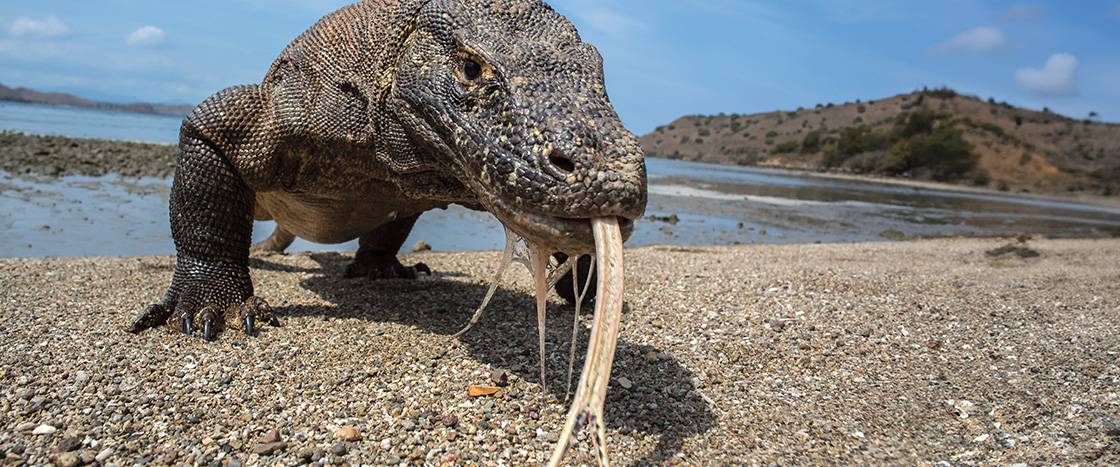MICHAEL DUNNING/GETTY IMAGES
Growing up to 10 feet (3 meters) long, the Komodo dragon is the world’s largest lizard! The giant reptile has a deadly secret. Its spit is full of toxic mucus!
This slimy stuff helps the Komodo dragon hunt in the Southeast Asian country of Indonesia, where it lives. It waits for an animal like a water buffalo to cross its path. Then it strikes! As it bites down, venom-filled goo oozes between its teeth and into its victim’s wounds. If the creature escapes, the venom will kill it in a few days. The Komodo dragon uses its powerful nose to sniff out the body—so it can gobble the meal up!
The Komodo dragon is the world’s largest lizard! They can grow up to 10 feet (3 meters) long. The giant reptile has a deadly secret. Its spit is full of toxic mucus!
This slimy stuff helps the Komodo dragon hunt. Its home is in the Southeast Asian country of Indonesia. It waits for an animal like a water buffalo to cross its path. Then it strikes! It bites down. Goo filled with venom oozes between its teeth. It gets into the victim’s wounds. The animal may escape. But the venom will kill it in a few days. The Komodo dragon uses its powerful nose to sniff out the body. Then it gobbles the meal up!

